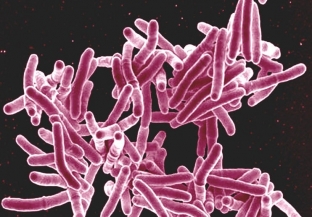Tuberculosis – an incredibly dangerous and insidious disease, which is one of the main problems of our time. The causative agent of this disease – Mycobacterium tuberculosis was discovered in 1882 by the German microbiologist Robert Koch, who received the Nobel Prize for this discovery in 1905. It would seem that more than 100 years have passed since the discovery of mycobacteria, and medicine has stepped far forward: there are a huge number of antibacterial drugs, and every year more and more advanced methods for diagnosing and treating various diseases appear. However, morbidity and mortality from tuberculosis is still very high. Why is it so difficult to destroy Koch's insidious wand?
Features of Koch's wand, causing its danger
Koch's bacillus or Mycobacterium tuberculosis belongs to the family Mycobacteriaceae, genus Mycobacterium. There are several types of Mycobacterium tuberculosis, among which it is the human type of Koch's bacillus that is the causative agent of about 90% of all cases of tuberculosis. This dangerous bacterium has two main species characteristics: pathogenicity and virulence. Pathogenicity is the ability of a bacterium to exist in another living organism, provoking certain reactions in it. Virulence – This is an indicator of the intensity of reproduction of bacteria in the body, while it has the ability to cause specific damage to its tissues and organs. The physiological characteristics of Koch's bacillus determine the high pathogenicity and virulence of this bacterium.
Koch's Wand:
- biochemical properties and morphology of Koch rods;
- physiological features: variability of Koch rods;
- resistance of Koch's wand to environmental factors.
Biochemical properties and morphology of Koch rods
Koch's bacterium is a gram-positive bacterium that is pathogenic to the human body, as well as to many other animal organisms. Guinea pigs are considered the most susceptible to infection with Koch's bacillus. In their form, Mycobacterium tuberculosis are straight or slightly curved rods, from 1 to 10 microns in length. Mycobacterium cells contain water, proteins, carbohydrates, fats and mineral salts – complete living organism. A distinctive feature of Koch's sticks is their ability to retain their color even when exposed to acids, alkalis or alcohol. This is due to the high content of fats, waxes and mycolic acid in the cells of mycobacteria.

Physiological features: variability of Koch rods
The variability of Koch's bacilli is one of the main properties that greatly complicate the process of treating tuberculosis. Mycobacterium tuberculosis polymorphism is manifested in the ability of Koch's rods to form new forms that are resistant to existing drugs. Especially dangerous "criminals" are the L-forms of Mycobacterium tuberculosis, which lose their dense cell wall and form spheroplasts surrounded by a cytoplasmic membrane. This membrane bears considerable resemblance to the human cell membrane. That is why the L-forms of Koch's sticks are much more pathogenic for the human body, and are resistant to most of the anti-tuberculosis drugs that exist today.
Resistance of Koch's wand to environmental factors
Resistance to environmental influences is another distinguishing feature of Koch's sticks. These harmful microorganisms can exist in nature for a long time, retaining their pathogenic properties. The longevity of mycobacteria in different environments is as follows:
- Koch's bacillus can exist in water and soil for about a year;
- dried sputum can be home to mycobacteria for 10-12 months;
- Koch's stick lives in raw milk for 2-3 weeks, and in butter and cheese – whole 8-10 months;
- frozen mycobacterium retains its properties for more than 30 years;
- dry 100° heat can destroy mycobacteria not earlier than in an hour;
- weak solutions of acids can only kill Koch's wand after 30 minutes.
All of the above factors indicate that you can become infected with tuberculosis even without being in close contact with a sick person: you can inhale Koch's stick just walking in the park with a child. The best way to protect against Koch's bacillus today is vaccination against tuberculosis.







Add a comment